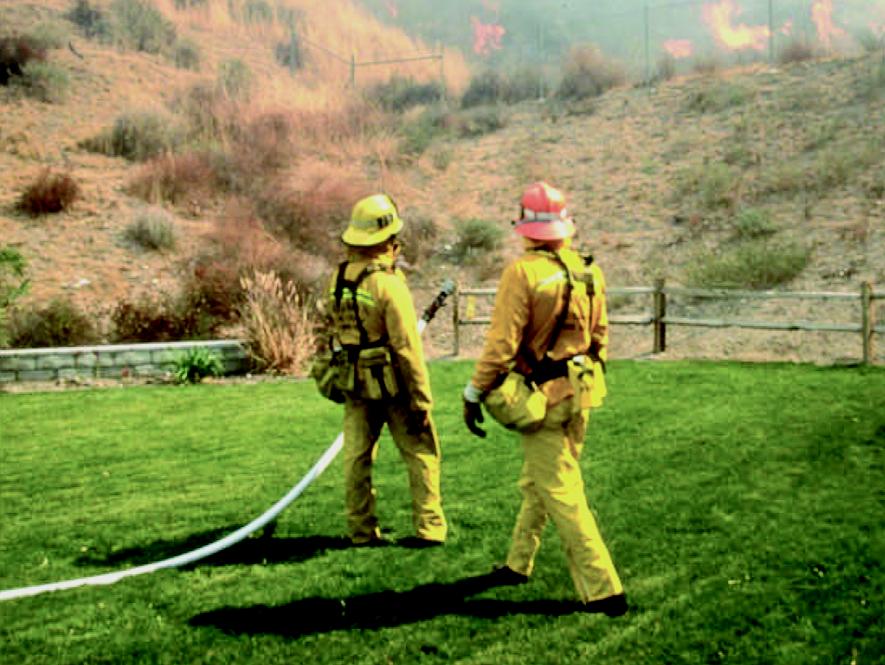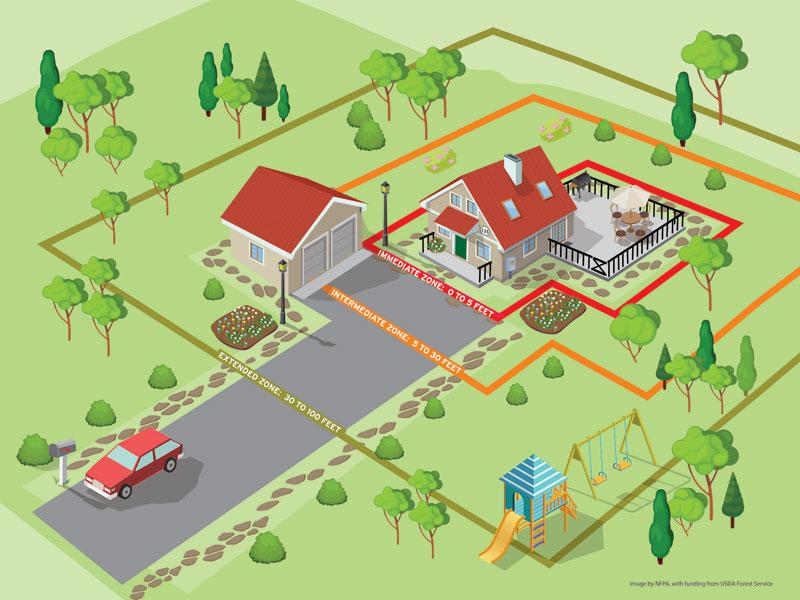Defensible Space
Defensible Space
|
Defensible space is a term used to describe the careful selection, location and maintenance of vegetation and other combustible materials on the property. The purpose of defensible space is to:
The priority is to start at the house and work outwards giving the greatest effort to eliminating combustible vegetation and other materials within five ft of the house and any attached decks. |
 |
- Zone 0: In the first five feet surrounding any structure and attached deck, avoid anything combustible- this includes woody plants, mulch, woodpiles, combustible trellises, and stored items. Zone Zero is an excellent location for walkways, or hardscaping with pavers, rock mulch, or pea gravel. Zone 0 should be coupled with a six-inch noncombustible zone between the ground and the start of the building’s exterior siding
- Zone 1: 5-30 feet from the structure should be "lean and clean". The goal is to eliminate connectivity between islands of vegetation by increasing the spacing between trees, removing lower branches of trees and shrubs, and creating areas of irrigated and mowed grass or hardscape between lush vegetation islands. Plants should be properly irrigated and maintained to remove dead/dry material.
- Zone 2: 31-100+ feet out to the property line. The goal is to moderate potential fire behavior by reducing the density of the trees, shrubs, and herbaceous plants or grasses to slow fire spread and reduce flame heights. Shrubs and trees should be well spaced and pruned to eliminate fuel ladders, where fire can climb from a ground fire to the tops of the vegetation.
- If you don’t own a 100-ft zone or more around the house: prioritize implementing the recommended actions under Zone 0 and 1. After completing these actions, work with neighbors to support each others efforts.
- If the property is large: As the size of the property expands so do the opportunities for strategic fire defense. It is a good practice to thin and prune trees, mow grass, and cut back shrubs along any road systems to allow for safe emergency access to and evacuation from the property. Strategic fuel breaks may be an option, especially along ridgelines or other critical control points that the local fire department can help identify. Broadscale fuel ladder reduction will be of benefit for tree survival. Water storage and installation of easy to access pipe fittings for fire personnel is also recommended.

References
- Seisel and Seaver (2008), Landscaping Tips to Help Defend Your Home from Wildfire, UC Master Gardener Program
- Skelly, Firescaping - Landscape Design for Wildfire Defensible/Survivable Space, University of Nevada Cooperative Extension
- Warnert (2015), Five-foot zone free of plants can help rural homes’ fire survival, UC Agriculture and Natural Resources
- Prepare for Wildfire, California Department of Forestry and Fire Protection
- Tahoe Living with Fire, Tahoe Fire and Fuels Team



